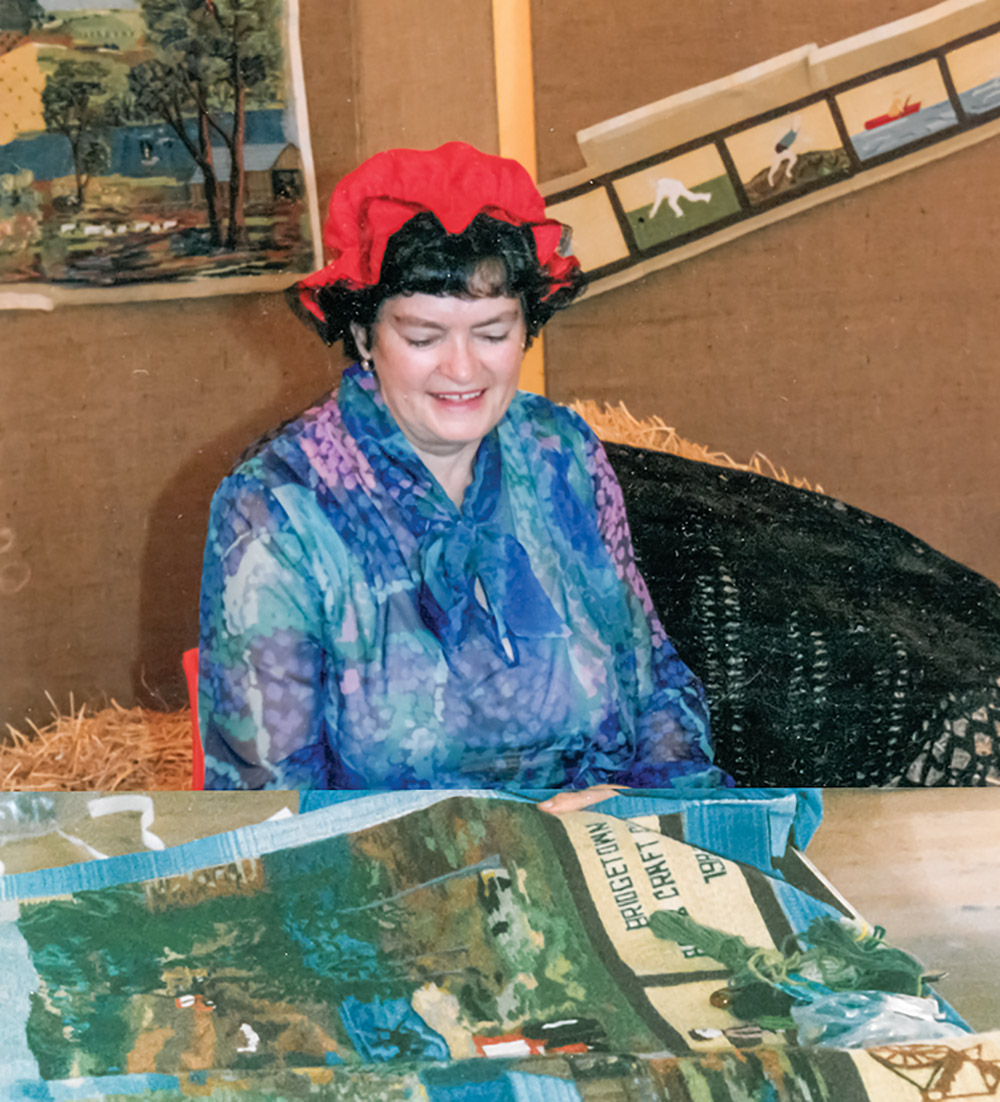

With the Bridgetown Art and Craft Centre recently celebrating its 55 year milestone, one of the projects of note the members of the club have pride in is the Bridgetown-Greenbushes Bi-Centennial Tapestry.
In 1986 a meeting was held of the members of the Art and Craft Club and Joan Krauze put a proposal to the meeting that they stitch a tapestry tracing the history of Bridgetown and Greenbushes as their Australian Bi-Centennial project.
This was discussed at great length as it would be a huge commitment by all members who wanted to participate. All matters were discussed, such as size, design, content, who would carry out the work, finance, etc. as it needed firm support to carry the project through.
What was decided on was a ‘Creative Tapestry’ showing the history of Bridgetown and Greenbushes over the past 120 years, from a time when the district became gazetted as a town on 4th June 1868.
The design starts in 1868 with bushland with Aboriginal settlement on the banks of the river with pristine country showing wild flowers, bush animals including kangaroos, possums, snakes, numbats, birds of the area and Jarrah trees to feature right through the tapestry.
Then comes settlement with Bridgedale with horse and cart, the old bridge, sheep and cattle.
Then progress with bullock team and whim, apple trees, timber mill, railway line and train, packing shed and mining with the church in and about the middle.
Then coming into the present time, with orchards in the background, pines, the Blackwood Marathon, today’s bridge, canoes, tourists’ tents, caravans, and featuring the crafts with a potter’s wheel, spinning wheel, wood turning up to the ending date of 1988.
The tapestry is 4.5 metres long by 650mm deep.
Quotes taken from the book ‘The Bridgetown-Greenbushes Bi-Centennial Tapestry’ reveal that “To create this Tapestry the design was cut into 20 pieces for stitching, and then re-joined into one piece. The small pictures at the bottom show our lifestyle in 1988.
“Colours were chosen by the individual member stitching the canvas with the exception of the continuing colours of the sky, river, border and background of small pictures.
“Not all members were interested, not all were stitchers, but the majority of members agreed to go ahead with the project, work commenced at once and an application was made to the Bi-Centennial Committee for funds to cover the cost of materials.
“The Tapestry was stitched with conservation in mind, following a few simple rules. The work was kept as clean as possible, keeping each section in a plastic bag or covered with plastic, when not being stitched.
“Not only the canvas itself but also the yarns used to stitch with. Hands were to be washed thoroughly before stitching or handling, this is to remove the acidity from skin as this has a damaging effect on fibres.
“All yarns used on the canvas were washed in a special solution which was obtained from the WA Museum, this is for the same reason, to remove the acidity.
“The Tapestry took hundreds of hours of work to complete and it was the dedication and commitment of all the members who became involved, some did a huge amount of work, others a small amount, each contributed what they could.
“Put together, it amounted to the Magnificent Tapestry that we have today as a lasting memorial to the Bridgetown Art and Craft Club and to its members and to those members who have passed on.”
The completed tapestry was presented to the Shire of Bridgetown-Greenbushes at the Annual Exhibition of the Bridgetown Arts and Craft Group on the 29th April, 1988, and is hung in the Shire Offices on Hampton Street, in the passage, on the left as you walk down the slope to the Shire’s reception.
This Story was published on November 2nd 2021
In Issue 315 of The Mailbag
© The Quality Shop 125 Hampton Street Bridgetown WA 6255
mailbag@thequalityshop.com.au